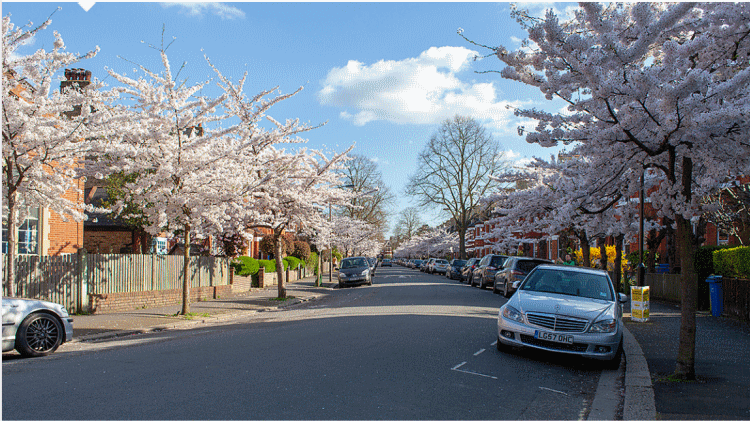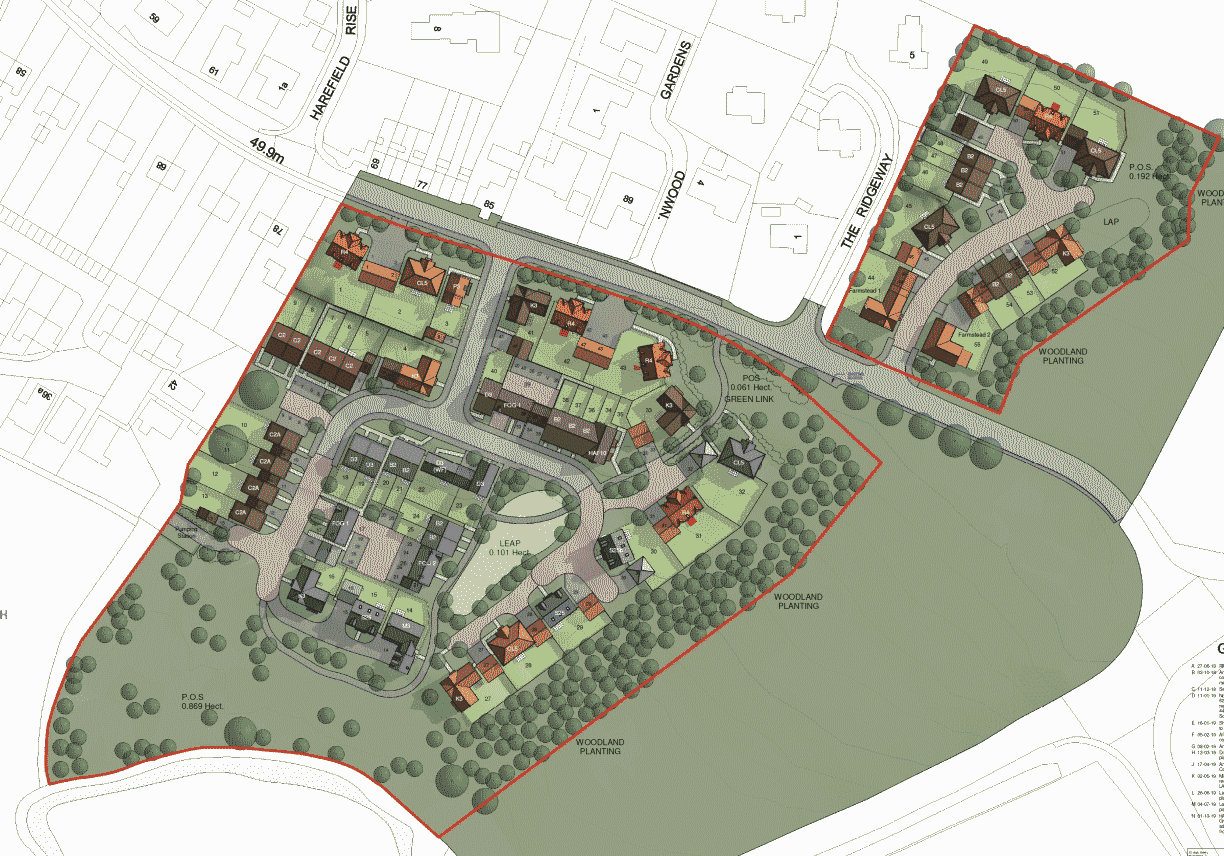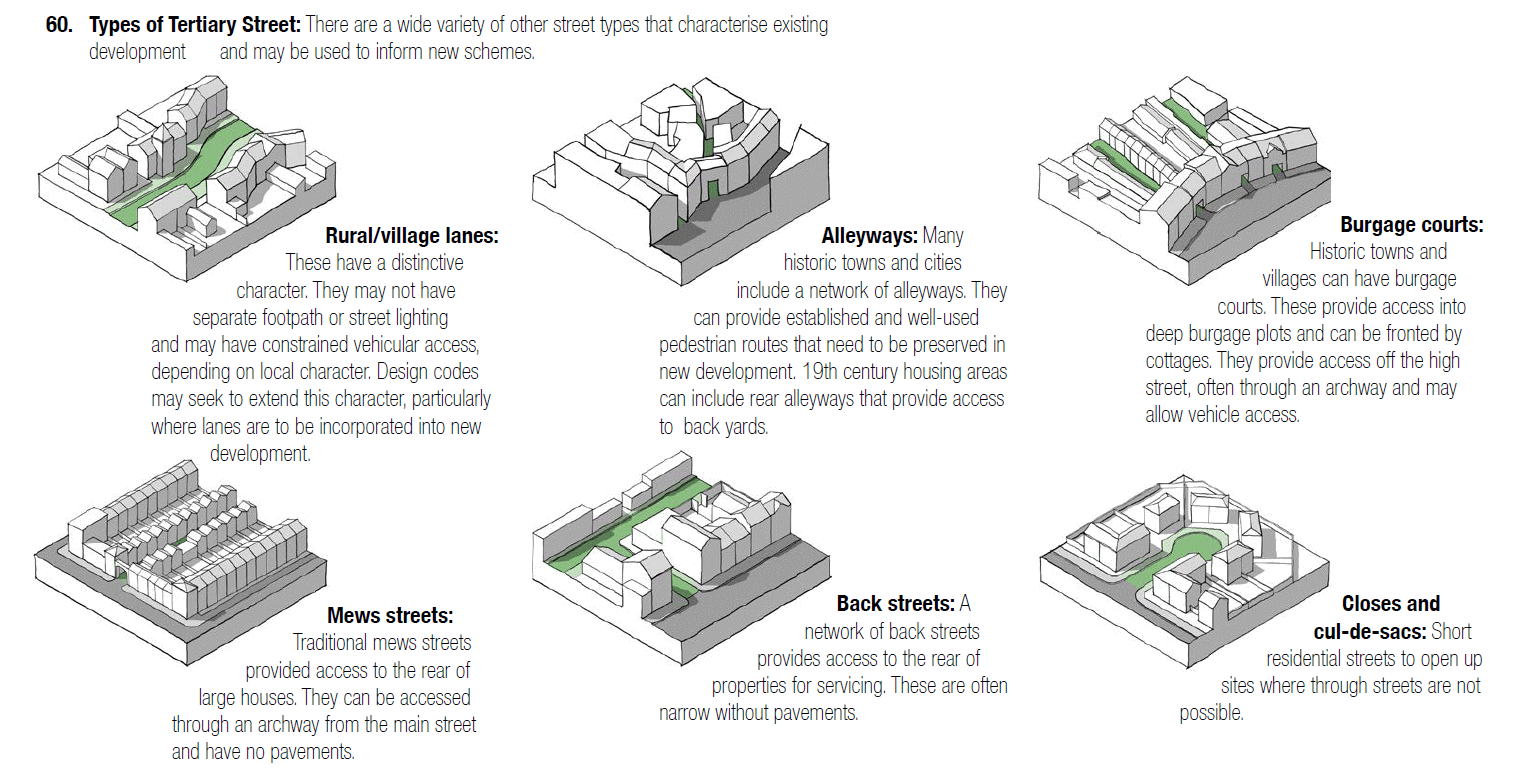Do tree-lined streets help you win or lose a planning appeal
The Framework now requires streets to be tree-lined and recent appeals show PINS are taking this requirement seriously. We review three appeals where failure to provide tree-lined streets has been a key factor in dismissing the appeal, and a fourth providing an example of a suitable planning condition to deal with the problem.

National policy requiring tree-lined streets
NPPF paragraph 131 states:
“Trees make an important contribution to the character and quality of urban environments, and can also help mitigate and adapt to climate change. Planning policies and decisions should ensure that new streets are tree-lined50, that opportunities are taken to incorporate trees elsewhere in developments (such as parks and community orchards), that appropriate measures are in place to secure the long-term maintenance of newly-planted trees, and that existing trees are retained wherever possible. Applicants and local planning authorities should work with highways officers and tree officers to ensure that the right trees are planted in the right places, and solutions are found that are compatible with highways standards and the needs of different users.”
Footnote 50 states, "Unless, in specific cases, there are clear, justifiable and compelling reasons why this would be inappropriate.”
In addition, the National Model Design Code sets a baseline standard expecting streets to be tree-lined (NMDC Part 1 paragraph 11).
New Smithy Avenue, Sheffield
Our first example is 2 linked appeals by Newett Homes for a reserved matters application for 21 dwellings and a full application for 9 dwellings (appeal references APP/R4408/W/20/3263538 and APP/R4408/W/20/3263535 respectively). The Inspector identified the effect on the character and appearance of the area as a main issue, noting paragraph 134 of the Framework, “clearly details that development that is not well designed should be refused planning permission”. 
The Inspector noted, “Paragraph 131 of the Framework recognises that “Trees make an important contribution to the character and quality of urban environments” and that new streets should be tree lined…… I have considered the use of suitably worded conditions to ensure the appropriate provision of open space and landscaping, however, I am not satisfied that there is sufficient space to accommodate such landscaping and tree planning within the proposed development as shown on the submitted plans. On the basis of the evidence before me I find that the proposed development, as shown on the submitted plans both separately and together, represents poor design, in particular the lack of landscaping, and as a result would harm the character an appearance of the area....” He dismissed the appeal.
Land at Brass Castle Lane, Middlesborough
This appeal related to a full application for 69 dwellings on an allocated housing site (APP/W0734/W/21/3268784). The quality of the design including trees was a key issue in the decision. While at first glance the scheme may appear to be partly tree-lined, the Inspector was unconvinced it met the requirements of the Framework.
The Inspector referred to paragraph 131 and noted, “The Framework states that planning decision should ensure that new streets are tree-lined unless there are clear justifiable and compelling reasons as to why this would be inappropriate. The policy also seeks to ensure that appropriate measures are in place to secure the long-term maintenance of newly-planted trees. The proposal is supported by a Landscape Masterplan which shows a mix of new trees of varying standard peppered throughout the development. However, these trees are predominantly within the private gardens of the proposed dwellings and while some would be positioned within the front gardens close to the street, I am not convinced that this would amount to a truly tree-lined street. Moreover, no justification has been put forward to suggest that a tree-lined street would be inappropriate.”

The appeal was refused with inadequate street trees contributing to it being dismissed.
Land at Bartlow Road, Linton, Cambridgeshire
Watered down proposals at discharge of conditions stage provides a salutatory lesson in how the tree-lined street requirement can trip up discharge of planning conditions (APP/W0530/W/21/3267781).
This development of 55 dwellings at Linton already benefited from reserved matters consent. Nevertheless, the appeal Inspector refused approval of the landscaping scheme condition citing NPPF paragraph 131 with regard to street trees. The Inspector noted:
“Whilst the proposed landscaping scheme features generous planting on the boundaries of the site, the proposed open space within the development features a limited number of trees and planting. This would fail to assimilate the proposed development into its surroundings. This is because, in the absence of appropriate landscaping to soften the appeal site, the development would appear stark and imposing when viewed from the A1307. In addition, the front gardens of dwellings are characterised by grassed areas and low hedges. This means that the proposed development would, in this regard, have a uniform appearance that would conflict with the variety of layouts and landscaping schemes that are present within other properties in the vicinity of the appeal site."
"In reaching this view, I have had regard to the Framework and specifically, paragraph 131. This places a particular importance upon the creation of tree-lined streets. Whilst the proposed development would feature some trees, in many locations, they would occur on an ad-hoc basis. Therefore, the proposed development would not feature tree lined streets, in conflict with the Framework. The lack of street trees, combined with the regular and relatively uniform landscaped areas located within the development, would create an environment that would be of more urban character. This would conflict with the character of an urban fringe that is prevalent within the site’s surroundings.”

The above plan shows the submitted landscaping scheme while the plan below shows the approved reserved matters layout.
Dealing with the issue using conditions
It is increasingly common for outline consents to include a condition requiring tree-lined streets. For example, in allowing a recent appeal for 165 dwellings on land east of Lutterworth Road, Burbage (APP/K2420/W/20/3265143), the following condition was added:
"No development shall be commenced until plans and particulars of "the reserved matters" referred to in the above conditions relating to the.….b) landscaping of the site including tree lined streets in accordance with paragraph 131 of the National Planning Policy Framework, the treatment of private and public space to enhance or protect the site's amenity through hard (boundary treatments) and soft measures and details of boundary planting to reinforce the existing landscaping at the site edges.”
In any appeal where tree-lined streets emerge as a concern, it may help to suggest such a condition in order to deal with the issue and avoid it tripping up the appeal.
From problem trees to celebratory trees
2022 offers a perfect opportunity to transform this thorny issue. In this year of the Queen’s Platinum Jubilee, developers might make a virtue of necessity by linking street trees to the “Plant a Tree for the Jubilee” scheme.
Mustering enthusiasm for necessary street trees may be easier if they are plugged into wider initiatives such as the Northern Forest or the London-based Street Tree site. The Forestry Commission also has useful resources to help inspire and encourage.
When street trees are simply not viable
The National Model Design Code (NMDC) Part 2 can come to the rescue as it details different types of streets, hinting that tree-lined main streets might be combined with narrower streets behind. A case must be made for being, “clear, justifiable and compelling reasons” why street trees are not appropriate, in accordance with NPPF footnote 50. The diagrams below from paragraph 60 of the NMDC may prove useful in this context.
National Model Design Code paragraph 60:
To find appeals of interest to you, see our Home page.

